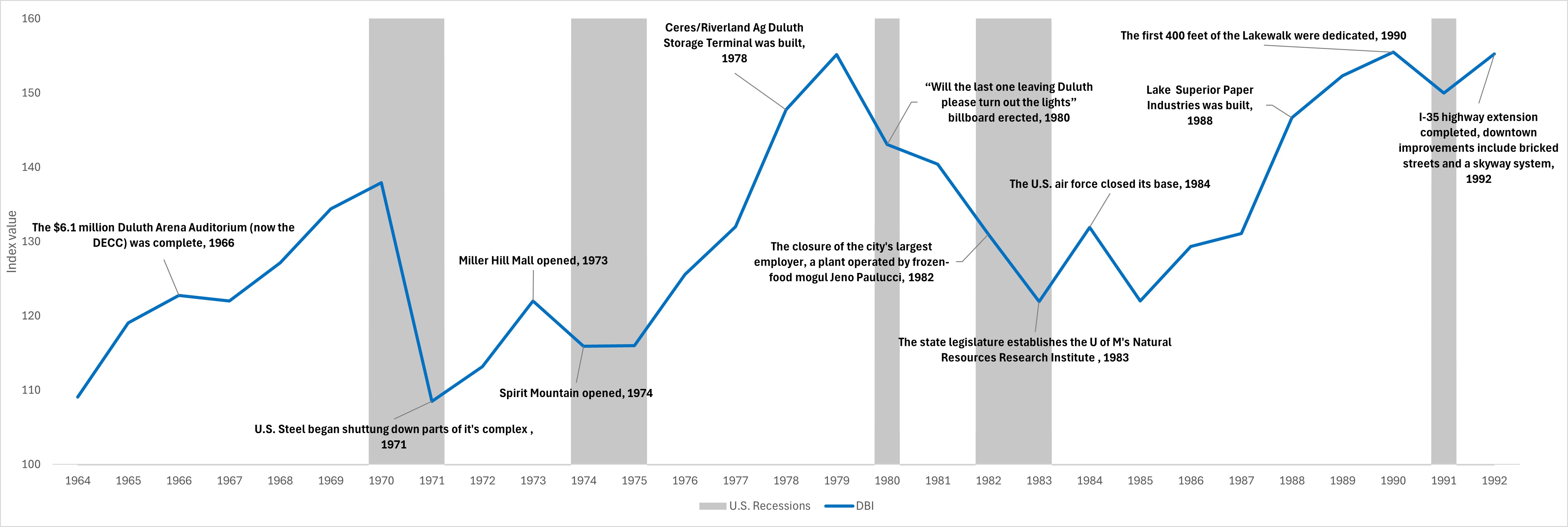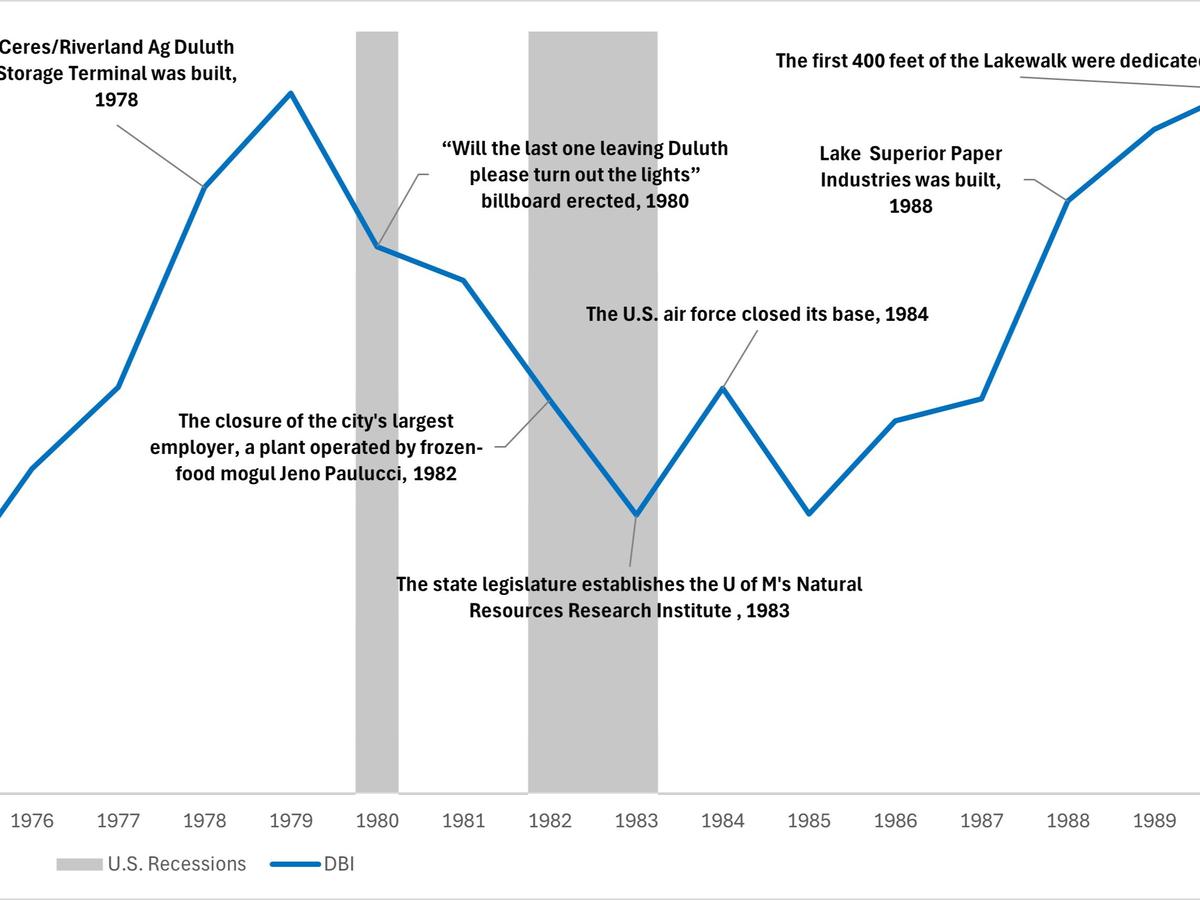In May 1964, the very first edition of the Duluth Business Index (DBI) was published by UMD Economics Professor Cecil Meyers and research analyst for the city, Glen Gronseth.
The index was established to address a community need. At that time, regional economic data was not widely available, and business and community leaders wanted information on the health of the local economy.
The index—which began with a baseline value of 100 and rose to values as high as 160—was calculated by compiling and weighting 15 indicators. These indicators were selected to represent business activity in the Duluth area and included measures such as electricity production, shipping levels, rail movement, and building permits. Higher index values represented economic growth while lower values reflected a decline in economic activity.
These extensive monthly reports became sought-after tools for businesses and government and were later joined by the monthly publishing of the Duluth Retail Sales Index and the Duluth Hotel-Motel Tax Index.
To commemorate this milestone, we’re revisiting the historic index and comparing the DBI’s movements to historic milestones in Duluth’s economy over the lifetime of the publication—1960 to 1992.
The figure below tracks the average annual value for the DBI, along with each of the U.S. recessions that occurred during the 28-year period, and twelve historic events that represented milestones in Duluth’s economy. Click on the image to see the graph up close.

Notable takeaways from the figure
- The recession that hit the U.S. during 1970-71 also coincided with the closure of Duluth’s U.S. Steel complex, which led to a loss of 2,500 skilled jobs. The DBI reflected that economic downturn, dropping to its lowest point in 1971.
- During the late 1970s, the DBI increased rapidly. In 1979, it reached the highest point in its existence. Also, during this period, the Ceres/Riverland Ag Duluth storage terminal was built, allowing for a significant increase in grain shipments in and out of the Port of Duluth-Superior.
- The early 1980s was a challenging period for Duluth economically. The city saw two recessions, the closure of the city’s largest employer, and the erection of the famous “Please turn out the lights” billboard. The DBI reflected these challenges, falling steadily from 1979 to 1983.
- The late 1980s and early 1990s marked something of an economic revitalization for the city. Lake Superior Paper Industries was built for nearly $400 million, creating 300 jobs. The construction of the Lakewalk and a major investment in downtown revitalization also occurred.
You can find 358 editions of the DBI, ranging from 1963 to 1992 in the BBER’s digital collection. With the assistance of our wonderful library staff, our collection now contains almost all our published studies, reports, infographics, and more—627 publications and counting.
We encourage you to explore the historic DBI reports. They are an amazing resource for researchers, historians, or just curious folks who want to learn about Duluth’s past.
